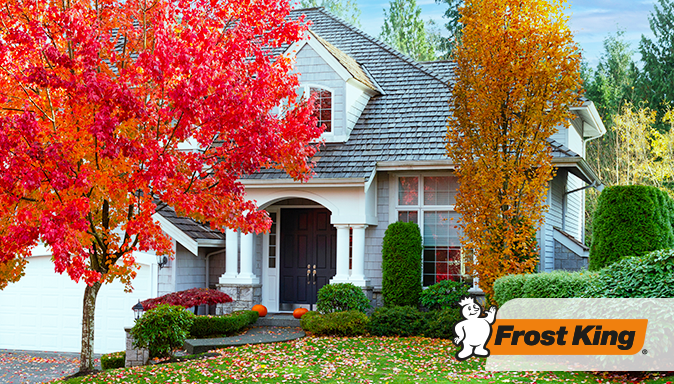Day are growing shorter and temperatures are dropping. That can only mean one thing: now is the time to get your home ready for winter.
Taking steps to prep your home for cold weather is essential, not just for your comfort but for your wallet, too. In this guide, we’ve rounded up eight tips to get your home winter-ready.
1. Insulate Your Home
If you do just one thing to get ready for winter, make it this one: ensure that your home is well insulated. Adding insulation to uninsulated areas like attics, floors, crawl spaces, and basements and sealing air leaks can save up to 20% on your home’s heating and cooling costs. Check for drafts around windows and doors and add weatherstripping to stop heated inside air from escaping and cold air from making its way into your home. Watch this video to learn how to install weatherstripping the right way:
2. Service Your Heating System
A well-maintained heating system operates more efficiently and can save you money on heating costs. Before cold weather hits, have your heating system professionally serviced. A technician will come out to check for worn parts, leaks or other issues and make sure that everything is in good working order. You should also clean or replace the filter and consider adding insulation to ductwork to increase your heating system’s efficiency and lower your heating bills. This video shows you how:
3. Check Your Windows
The Department of Energy estimates that 30 percent of a home’s heating energy is lost through windows. If your home has old, single-pane windows, you will probably eventually want to upgrade to energy-efficient double- or triple-pane windows. If you’re a renter or if new windows just aren’t in the budget right now, you can block drafts in an afternoon with Frost King Window Kits and reduce heat loss by as much as 35 percent.
4. Reverse Ceiling Fans
If you’re using a ceiling fan in the summer to cool your rooms, did you know that you can also use it in the winter to make rooms feel warmer? Though it may sound counterintuitive to use a fan to warm things up, most ceiling fans have a reverse setting that pushes warm air downward and makes your rooms feel cozier. To make rooms even more comfy, add Heat and Air Deflectors to vents throughout your home: they direct warm air downward so all your heat doesn’t rise to the ceiling.
5. Clean Gutters and Downspouts and Add Roof Cables
Clogged gutters let water back up and freeze, forming ice dams that can damage your roof and walls. Clean out gutters and downspouts before winter weather hits, then add roof cables to keep water melted and flowing away from your home. This guide explains why ice dams form, and how Frost King’s Roof & Gutter De-Icing Kits melt ice away before it can cause damage.
6. Keep Pipes from Freezing
Frozen pipes are one of the things a homeowner's nightmares are made of. When pipes freeze and burst, they cause extensive water damage and costly repairs. To keep pipes from freezing, wrap exposed pipes with insulation or add heat cables to keep water flowing on even the coldest days.
7. Seal Gaps and Cracks
Check for gaps and cracks in your home’s walls, floors, and foundations, especially in areas where cable, wires, or pipes enter your home. Seal them with caulk or weatherstripping to keep cold air out and warm air in. Fill really large cracks with Frost King Caulk Saver before adding caulk to save yourself some money.
8. Maintain Your Fireplace
If you have a fireplace, have it cleaned and inspected before you light the first fire of the season. Only burn seasoned firewood to avoid creosote build up and install airtight glass doors to prevent heat loss when the fireplace is not in use.
Preparing your home for winter saves you money and keeps your home safe and comfortable when the weather gets wicked—and if you cross these eight things off your to-do list, you’ll be ready to handle whatever challenges that winter brings your way.
